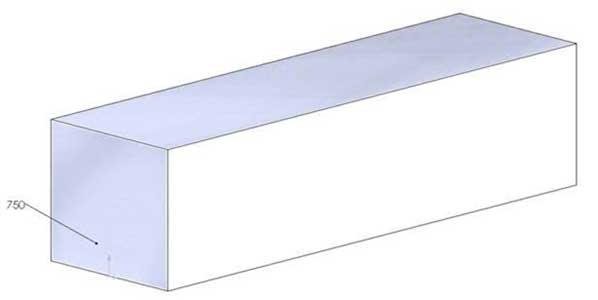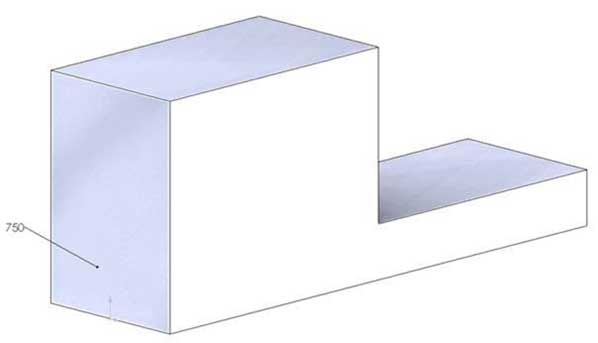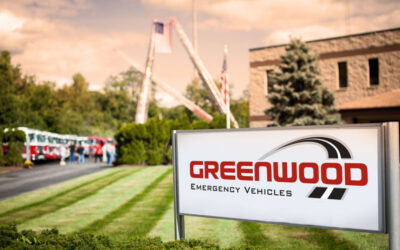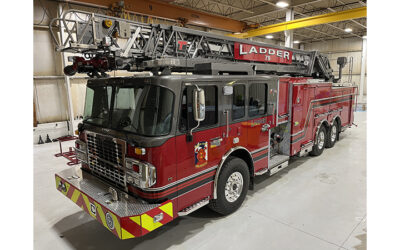By Bill Adams
Pundits and commentators expound on the firematic benefits of using L-shaped booster tanks on pumpers. Apparatus manufacturers (OEMs) promote rigs with “New York City style” low hosebeds. (See Apparatus Purchasing: FDNY-Style Hosebeds, http://www.fireapparatusmagazine.com/articles/print/volume-22/issue-9/features/apparatus-purchasing-fdny-style-hosebeds.html.) No side is taken on the fireground advantages or detriments of using an L-shaped tank. Do what’s best for your own department. What purchasers might want to consider are the possible ramifications in weight distribution and handling characteristics of apparatus when using an L-shaped tank.
Disclaimer: There is no accusation or claim an L-shaped tank is unsafe. OEMs are obligated to build apparatus in compliance with National Fire Protection Association (NFPA) 1901, Standard for Automotive Fire Apparatus, and applicable Department of Transportation (DOT) rules and regulations. And, I am sure they all do.
Handling characteristics are subtle, almost undefinable features that realistically cannot be measured on a scale from 1 to 10. They are in the eyes of the beholder. Neither the NFPA nor the DOT rates how well a rig handles. The drivers (aka chauffeurs, operators, and engineers) do. As an example, I’ve had the opportunity to drive custom cab and chassis pumpers with motors mounted inside the cab, midmounted, and rear-mounted. All three were legal and compliant, yet all three handled differently.
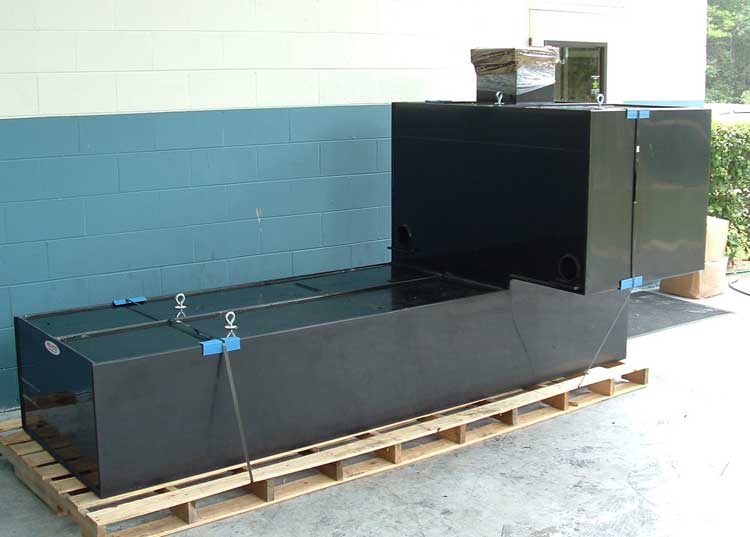
An L-shaped booster tank with the upper leg offset toward the curb side of the apparatus. Photo courtesy of Pro Poly of America.
Comparing the handling characteristics of rigs with and without an L-shaped booster tank can be equally challenging. Factors such as wheelbase, front and rear gross vehicle axle weight ratings (GAWR), weight of the cab, location of the fire pump, and the unladen weight of the body and tank material are all contributing factors that must be considered on a one-on-one basis. As an example, one OEM’s method of construction and materials used may readily support an L-shaped tank while another OEM’s construction methods and materials for an identical size and configured rig may not without changing GAWR’s or moving fixed equipment or changing the configuration of the tank. The only factor that is constant is the weight of water.
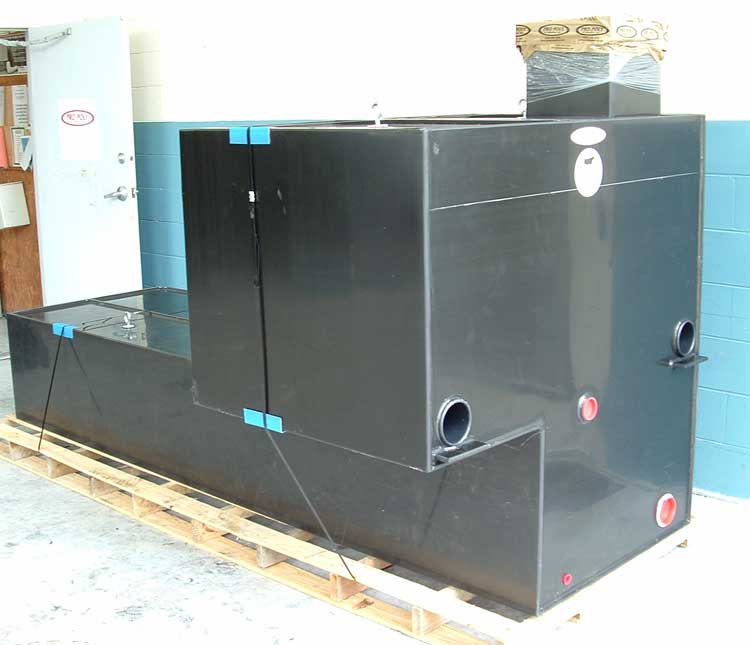
An L-shaped booster tank with the upper leg offset toward the curb side of the apparatus. Photo courtesy of Pro Poly of America.
I asked Wyatt Compton, Product Manager & Application Engineer at Spartan Emergency Response, to briefly explain approximately what happens to the water weight when going from a 750-gallon capacity rectangular tank about 140 inches long and about 35 inches high (figure 1) centered over a rear axle to an L-shaped tank (figure 2). He explained a definitive answer could not be given unless exact tank measurements were given and exact allowances were made for cut-outs, piping sleeves, foam cells, etc. Compton said “Going from the 750-gallon rectangle shaped to an L-shaped tank with a 57-inch-high forward section and about a 14-inch-high rear section could move the center of gravity forward around 20+ inches. The front half of the L-tank would have a water weight of about 5,048 pounds, and the rear portion would have a weight of about 1,215 pound.” He also noted the exact weight distribution on each axle would depend on the wheelbase.
My interpretation of his analysis is the L-shaped tank could transfer several thousand more pounds onto the front axle, which might require a larger front GAWR. I questioned his comment about moving the center of gravity forward as I understood raising the center of gravity would be of paramount importance to preventing tip-overs. He replied, “Center of gravity height is also important because of its effects on how it affects how the body leans when cornering. Moving it fore-aft changes how much weight bears on the suspension as it turns. So as a vehicle moves and the suspension flexes in a corner, that center of gravity will flex the suspension, and more weight will bear on the outside tires and springs. If that center of mass is right over the rear axle, its main effects are just on that rear axle. As it moves forward, more of the weight bears on the front suspension. Conversely, if that weight moves rearward behind the axle, it can actually UNLOAD the front tires which have the responsibility for steering and (depending on brake balancing) braking.”
I do not know how to calculate or where to find out how much weight should be on a front axle. Is it a percentage of the GAWR? Or, is there a ratio that must be kept between the front and rear axles? There are only nine manufacturers of custom cabs and chassis for the fire service. Perhaps they can tell you. Ask. An L-shaped booster tank may or may not be a contributing factor in answering those questions. I would only be speculating in answering. A wild guess could be a significant addition of weight on a front steering axle might affect the handling characteristics when cornering—especially in inclement weather such as heavy snow. I’m sure your favorite apparatus manufacturer can answer for their specific product(s).
BILL ADAMS is a member of the Fire Apparatus & Emergency Equipment Editorial Advisory Board, a former fire apparatus salesman, and a past chief of the East Rochester (NY) Fire Department. He has 50 years of experience in the volunteer fire service.


